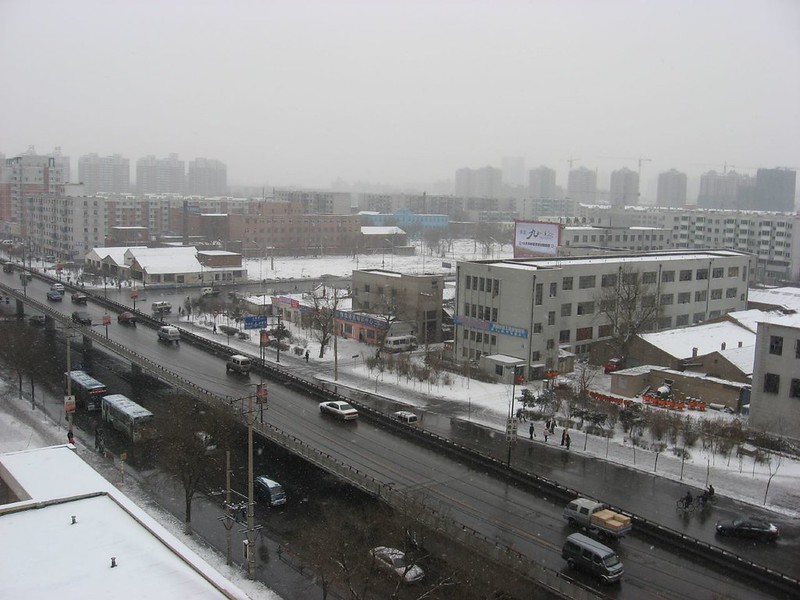A Chinese research team has analyzed the operation and performance of two air-source heat pumps (ASHPs) during the heating season in Shenyang, a city in the cold region of China, in an effort to investigate if heat pumps may help meet increasing heat demand in the country.
“To explore the key factors affecting the load characteristics of office buildings, this study measured the outdoor meteorological conditions, building annual load, and room load in two office buildings located in cold regions of China,” they explained. “The actual operation effect of each ASHP was subsequently evaluated to address the practical operational problems associated with actual ASHP operation.”
The group analyzed the performance of the heat pumps in a building with a height of 15.5 m and an area of 1,600.32 m2 (building A) and a building with an area of 320.45 m2 and a height of 9 m (building B). The space was heated to a goal temperature of 20 C in both buildings via a radiant floor heating system. The heating season in Building A was measured in 2016-2017 and in Building B in 2018-2019 and was corrected for compression.
Mismatch
“The results show that the highest coefficient of performance (COP) of the ASHP in Building A was 3.27 while the integrated part load value (IPLV) was 2.68,” they found. “The COP value of the ASHP in Building B was 1.55 while the IPLV was 2.45.”
According to the researchers, a mismatch between the load and heating capacity was present in both buildings. Generally speaking, the unit heating capacity remained the same in both cases even when the instantaneous load decreased. “The total power consumption of the systems in Buildings A and B accounted for 84% and 94%, respectively. The excessive power consumption of the ASHP during operation is another critical factor influencing high energy consumption,” they further explained.
Popular content
Another issue identified by the researchers was the high energy consumption of heat pump transmission and distribution systems. “When the transmission and distribution systems of either building consumed excessive energy, the performance coefficient of the ASHP systems decreased, and the power consumption of the water pumps exceeded their rated power by 36%,” they said.
Heat loss
Conducting a heat loss analysis, the researchers found that while the average heat capacity in building A from January to March was 12,082.55 kW, the actual average heat supply was 11,310.29 kW. That is a loss of 772.26 kW, or 7.6%. “The monthly average heating capacity of Building B from January to March was 9,556.74 kW, the monthly average heat supply was 8651.77 kW, and the monthly average heat loss was 904.97 kW. Thus, heat loss accounted for 16.9% of the total heating capacity of the system,” they highlighted.
They concluded that the poor values shown in the operating phase can be optimized by matching the building's instantaneous load to the heat production of the ASHPs, which they said would improve the operating effect of the two buildings comprehensively. They added the heating capacity of the heat pump could be improved to optimize supply-demand imbalances during operation.
The results were presented in “Operating Characteristics and Evaluation of Air Source Heat Pumps in Cold Regions during Heating Season in China,” published in Energy and Built Environment. The scientists were from China’s Shenyang Jianzhu University, China Association of Building Energy Efficiency, Dalian University of Technology and the Ministry of Housing and Urban-Rural Development.
This content is protected by copyright and may not be reused. If you want to cooperate with us and would like to reuse some of our content, please contact: editors@pv-magazine.com.


By submitting this form you agree to pv magazine using your data for the purposes of publishing your comment.
Your personal data will only be disclosed or otherwise transmitted to third parties for the purposes of spam filtering or if this is necessary for technical maintenance of the website. Any other transfer to third parties will not take place unless this is justified on the basis of applicable data protection regulations or if pv magazine is legally obliged to do so.
You may revoke this consent at any time with effect for the future, in which case your personal data will be deleted immediately. Otherwise, your data will be deleted if pv magazine has processed your request or the purpose of data storage is fulfilled.
Further information on data privacy can be found in our Data Protection Policy.